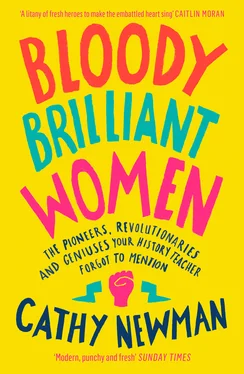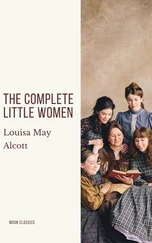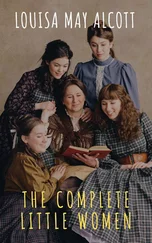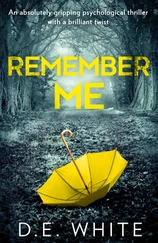Derbyshire-born Hannah Mitchell, a seamstress who went on to become a leading suffrage activist and Labour councillor, was elected as a Poor Law guardian in the market town of Ashton-under-Lyne in May 1904. Years later she became a member of the Manchester Baths Committee and wrote with pride of the ‘really up-to-date little wash house’ she had helped to get built, where ‘a family wash could be done in a couple of hours, and the home kept free of wet clothes and steam’.57
From the 1850s onwards, a pressing social concern had been the woeful state of housing for the poor. One of Fabian-stalwart Beatrice Webb’s sisters worked as a rent collector for the housing scheme run by Octavia Hill – the woman Webb said taught her ‘the meaning of the poverty of the poor’. Webb first met Hill in 1886 at the home of their mutual friend Henrietta Barnett, the co-founder of Hampstead Garden Suburb and Toynbee Hall, the ‘settlement’ centre for the poor in London’s Tower Hamlets. ‘She is a small woman, with large head finely set on her shoulders,’ Webb wrote in her diary:
The form of her head and features, and the expression of the eyes and mouth, show the attractiveness of mental power. We talked on Artisans’ Dwellings. I asked her whether she thought it necessary to keep accurate descriptions of the tenants. No, she did not see the use of it … She objected that there was already too much windy talk. What you wanted was action … I felt penitent for my presumption, but not convinced.58
The regal hauteur is immediately evident. Still, more than any other woman of her era, Hill could see that grand schemes only worked if you combined clarity of ambition with an infinite supply of patience.
Octavia Hill was born in 1838 in Wisbech, Cambridgeshire. Her father, James Hill, was a corn merchant who had fathered six children and been widowed twice by the time he married Octavia’s mother, Caroline Southwood Smith – the family governess, hired after James was impressed by her writings on education.
In 1840 James Hill’s business collapsed and he fell into a depression. The family moved to London where Caroline found work as manager and bookkeeper of the Ladies’ Cooperative Guild. As soon as she was old enough, Octavia worked alongside her as her assistant and at fourteen began supervising the local ragged school children as they manufactured toys. But she was no callous ‘sweater’ – on the contrary, she took the children on regular trips to wide open green spaces like Hampstead Heath and noticed how much they valued and enjoyed them.
This sowed the seeds of a scheme for improving the working classes’ quality of life by improving their environment – principally their homes, which were cramped and run-down even when ‘well kept’. She wasn’t the only one to come up with the idea. A mass of so-called ‘model dwelling’ companies emerged in London in the middle of the nineteenth century. There were thirty or more operating by the 1870s, of which the oldest, the Metropolitan Association for Improving the Dwellings of the Industrious Classes, had been around since 1841. Their goal – and Hill’s – was solidly paternalistic, and at least one of their aims was the maintenance of the status quo, by nipping discontent in the bud. As Lord Shaftesbury put it: ‘If the working man has his own house, I have no fear of revolution.’59
In other respects, though, Hill was different. For one thing there was the unusual matter of her key investor. John Ruskin had taken an interest in her as a fifteen-year-old after seeing her sketches – she was a talented artist – and had offered his services as an art tutor. He invested money he had inherited from his father in Hill’s Charity Organisation Society for a 5 per cent dividend.
On the whole, as we know, Ruskin preferred his women to stay home by the hearth. But exceptions were permitted: if they were carrying out ‘public work or duty which is also the expansion of that [i.e. their domestic role]’ then they had his blessing, as such work was consistent with what Sheila Rowbotham calls Ruskin’s ‘organic vision of society as an interconnected household’.60
In 1865, Hill bought her first properties, close to Marylebone High Street in central London, but a million miles from the area as we now know it. She described her purchase a little later as ‘a row of cottages facing a bit of desolate ground, occupied with wretched, dilapidated cow-sheds, manure heaps, old timber, and rubbish of every description’:
The houses were in a most deplorable condition – the plaster was dropping from the walls; on one staircase a pail was placed to catch the rain that fell through the roof. All the staircases were perfectly dark; the banisters were gone, having been burnt as firewood by tenants. The grates, with large holes in them, were falling forward into the rooms.61
Most ‘model dwelling’ companies had rules and regulations designed to exclude tenants of ‘bad character’ and attract the respectable working classes. Octavia went one step further. She believed that if you enabled people to develop self-respect and self-reliance then they wouldn’t need charity. Any form of philanthropy which cultivated dependency was pointless and un-Christian. Reading one of her letters from 1890, I’m reminded of some of the twenty-first-century political rows over welfare reform:
We have made many mistakes with our alms: eaten out the heart of the independent, bolstered up the drunkard in his indulgence, subsidised wages, discouraged thrift, assumed that many of the most ordinary wants of a working man’s family must be met by our wretched and intermittent doles.62
Hill’s tenants were closely monitored by teams of lady volunteers who distributed forms in which they were expected to review their weekly conduct. Hill favoured cottages rather than the barrack-like blocks popular with other housing associations – ‘little houses’ where lower-class people could ‘get the individual feeling and notice which trains them in humanity’; though by the end of the century she was experimenting with maisonette-like ‘compound houses’, ‘two distinct cottages one on the top of the other’:
People become brutal in large numbers who are gentle when they are in smaller groups and know one another, and the life in a block only becomes possible when there is a deliberate isolation of the family, and a sense of duty with respect to all that is in common.63
Any profits from the scheme were spent on what Hill considered to be improvements – like playgrounds and gardens. By 1874 she ran fifteen housing schemes and had around three thousand tenants. Ten years later she began to manage properties for the Ecclesiastical Commissioners.
But housing wasn’t Hill’s only focus. She wanted her tenants to be immersed in culture, education and nature. So she campaigned for the opening up of closed-off public spaces and the preservation of areas such as Hampstead Heath. In 1876, she and her sister Miranda founded the Society for the Diffusion of Beauty, later rechristened the Kyrle Society. This mutated over time into a ‘holding trust’ in which the ownership of threatened land or buildings could be vested. Hill suggested it be called ‘The Commons and Gardens Trust’. But a colleague thought it should have a snappier title. What about ‘National Trust’? She agreed and the society was registered in 1895.
Hill accomplished a good deal, but it didn’t come easily to her. A workaholic perfectionist who hated delegating, she had several breakdowns triggered by a combination of overwork and a turbulent emotional life. But while she gave the world a blueprint for philanthropic property management, she worked on a small scale, smaller than her reputation perhaps suggests, and the housing crisis of the early twentieth century needed more far-reaching reform than she was able to provide.
Читать дальше












